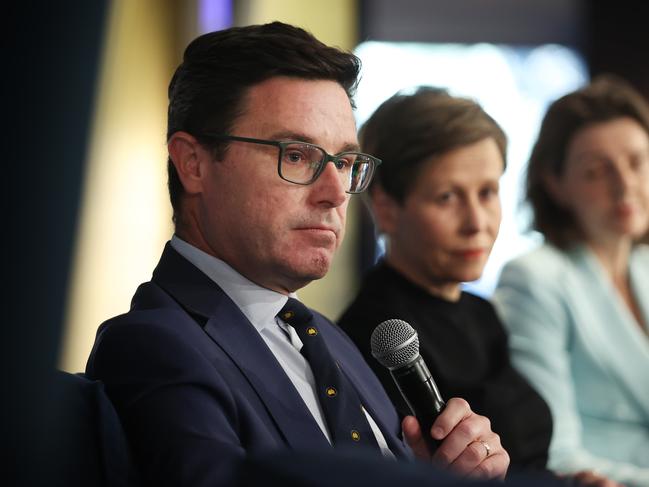Coalition cagey on cost of nuclear
The Coalition insists its nuclear plan will be affordable but is refusing to reveal the estimated cost, promising more details on its energy policy will come in announcements “before the next election”.
NSW
Don't miss out on the headlines from NSW. Followed categories will be added to My News.
The Coalition insists its nuclear plan will be affordable but is refusing to reveal the estimated cost, promising more details on its energy policy will come in announcements “before the next election”.
Labor has labelled the Opposition’s pledge to build seven nuclear power plants by 2050 as “economic insanity” but the Coalition has claimed its costed policy will stack up.
Nationals leader David Littleproud said more of the Coalition’s energy plan would be released in coming months, including the estimated cost of building the nuclear plants.
“We’re taking Australians on this journey with us and the next phase of that will be the costings and they’ll be well out before the next election,” he said.
“We’ll be announcing the costings of the plants and where we put them, and the generation costs and then the mix.”
After copping criticism for its meme-fuelled nuclear scare campaign, Labor has switched focus to the economic impact of the Opposition’s vision, claiming the nuclear option was more expensive than renewables, would not lower power bills in the near term and would create investment uncertainty.

Anthony Albanese also said the Coalition had not explained what was going to replace retiring coal-fired power stations in the decades before it expected nuclear to be online.
“The big question is what happens in the meantime into the 2040s, in terms of filling the energy gap,” the Prime Minister said.
Mr Albanese said he was happy to have a debate about the facts on nuclear, as “the facts and the science tells us that it simply doesn’t stack up”.
The PM rejected the suggestion that recent poll results – including a survey conducted by News Corp, showing a majority of Australians were open to nuclear playing a role in the country’s future energy mix – meant Labor was out of touch on the issue.
He said polls showed support for solar, wind and hydro energy was much higher, followed by gas and then nuclear.
Analysis by the Smart Energy Council has estimated seven nuclear power plants would only supply about 3.7 per cent of Australia’s energy needs by 2050 at a cost of between $116bn and $600bn.
But the Coalition has since revealed multiple reactors – estimated by the CSIRO to cost about $8.6bn each – could be located on each of the seven proposed sites.
Mr Albanese on Monday announced the appointment of former NSW Liberal treasurer and energy minister Matt Kean to head up the Climate Change Authority, an independent body tasked with providing advice to government.
Mr Kean, who only announced his resignation from state parliament earlier this month, would not comment on the political debate over nuclear, but said in his former role he was advised in 2019 the technology did not stack up financially.
“We looked at all options (to replace coal), including nuclear,” Mr Kean said. “The advice I received at the time … was that in order to bring nuclear into the system it would take far too long and be far too expensive for NSW.”





